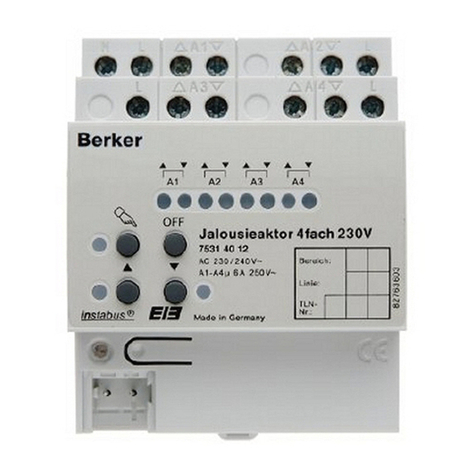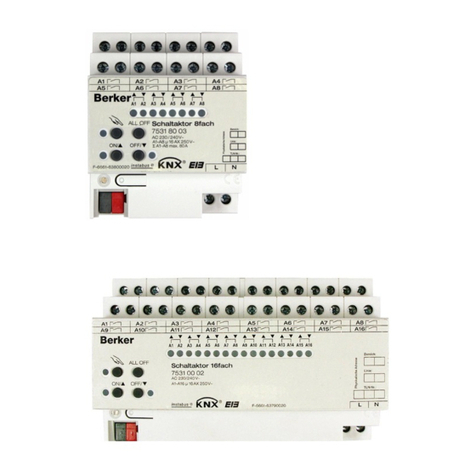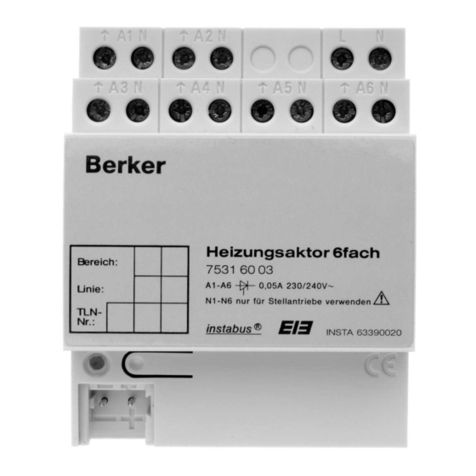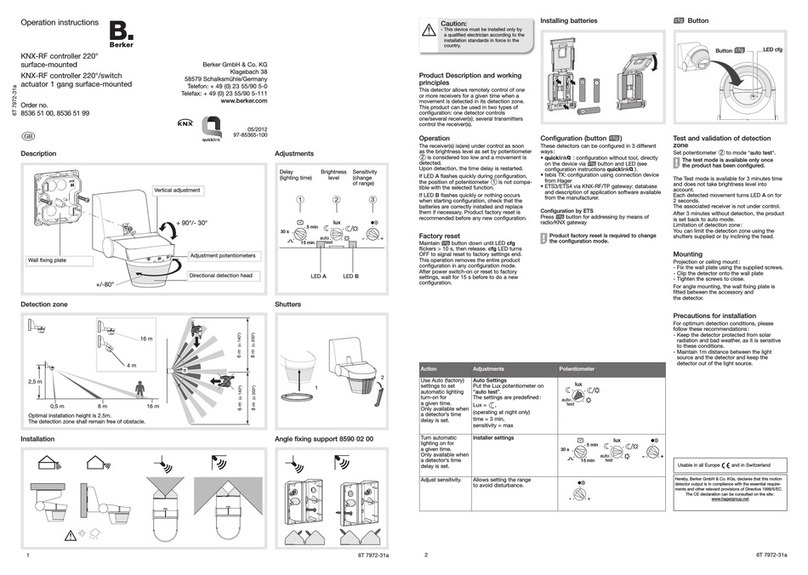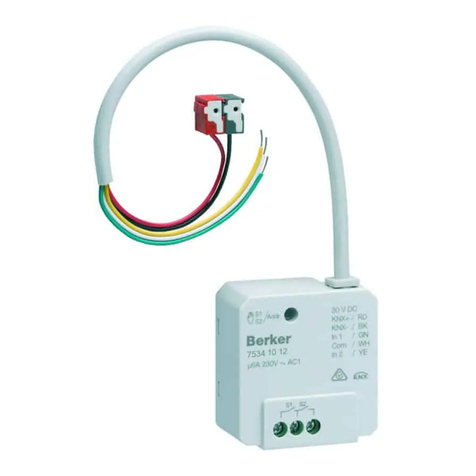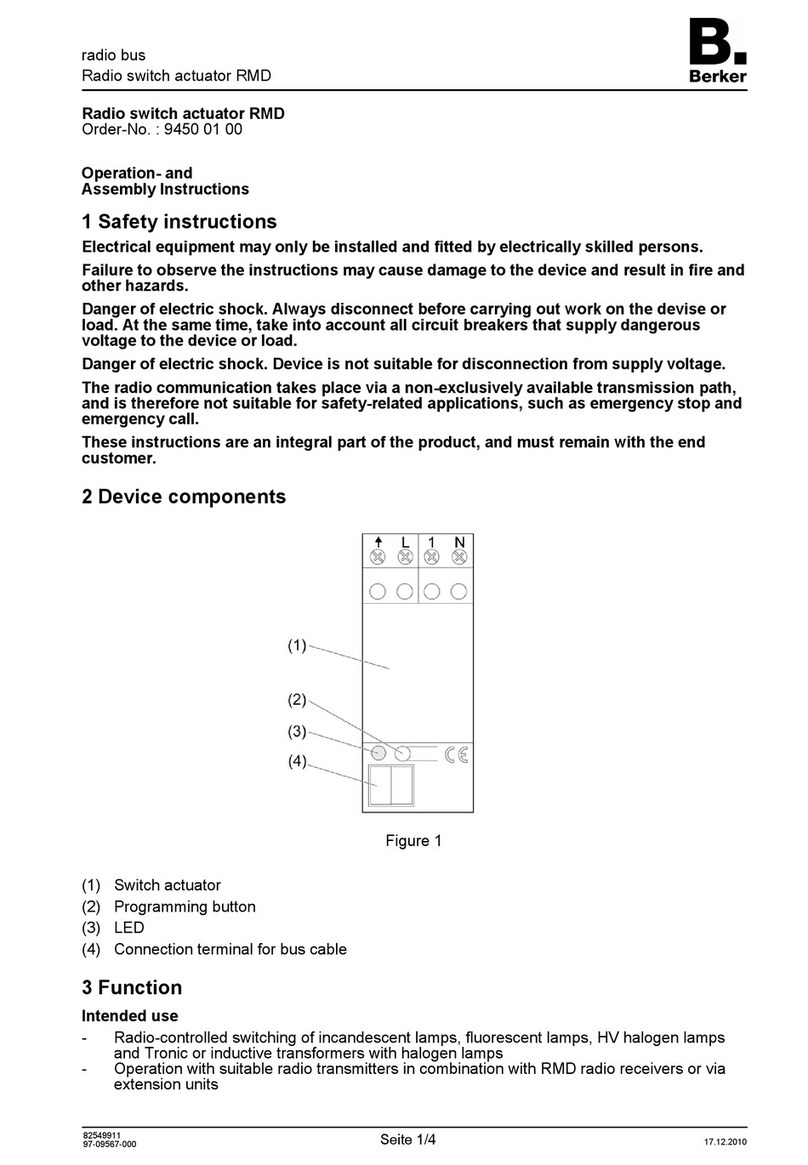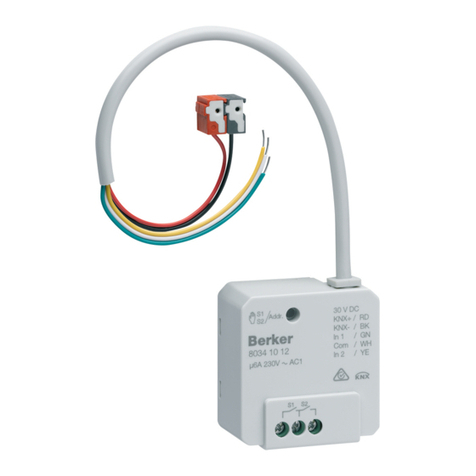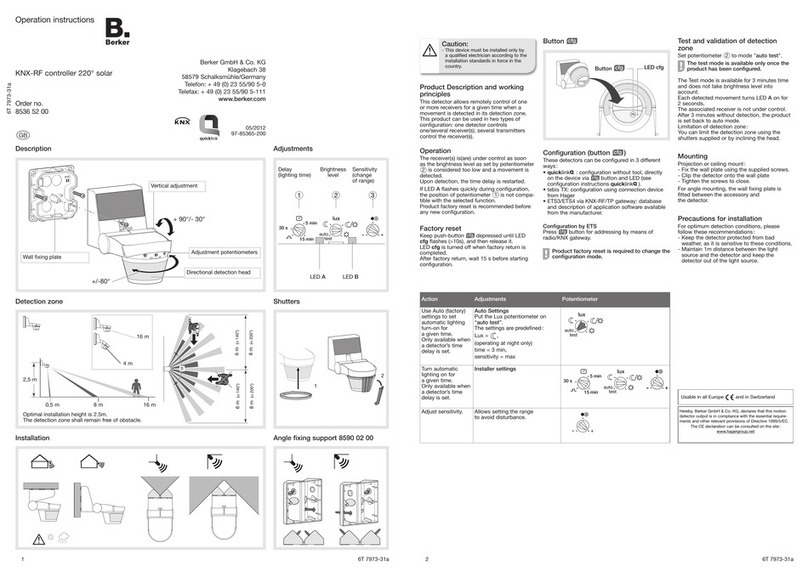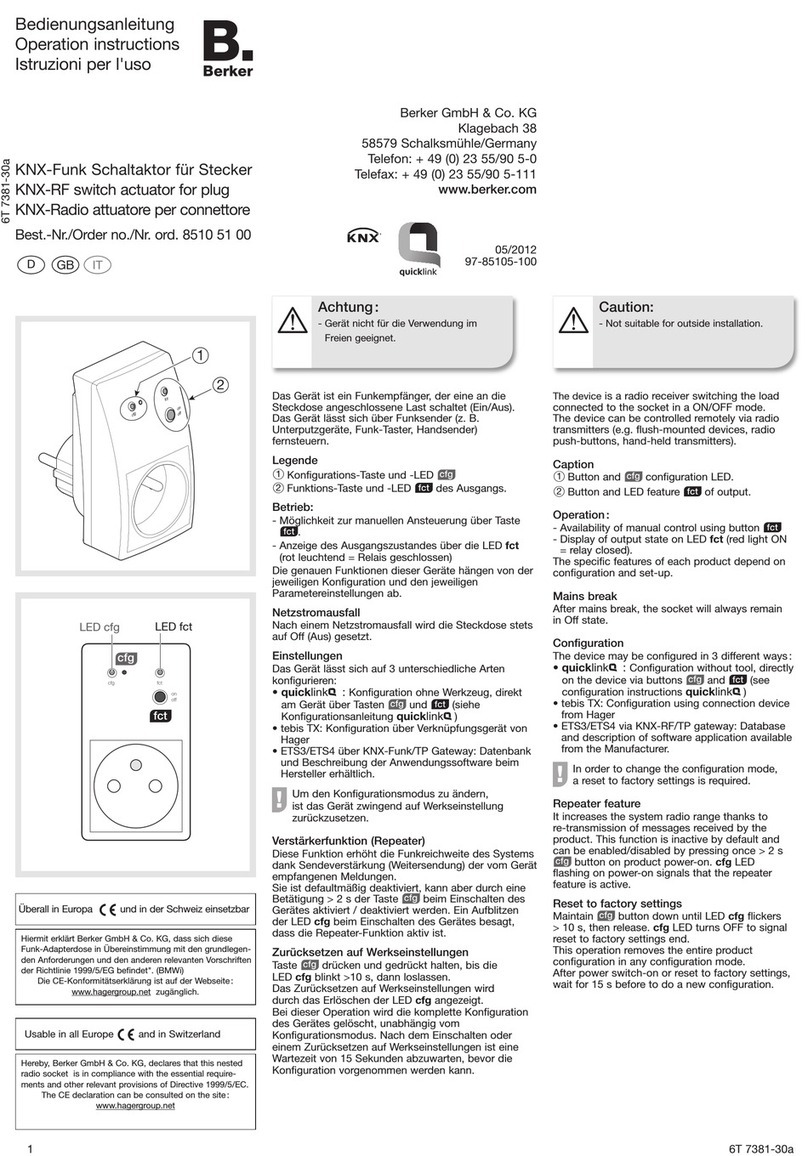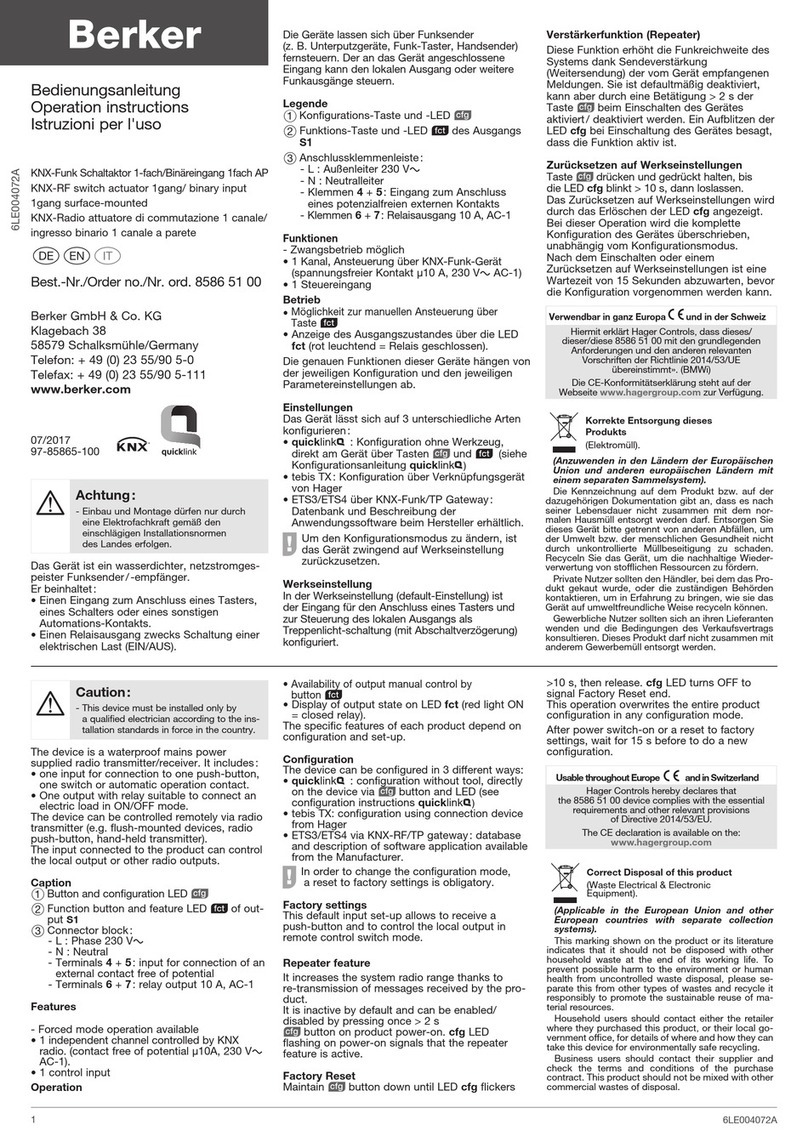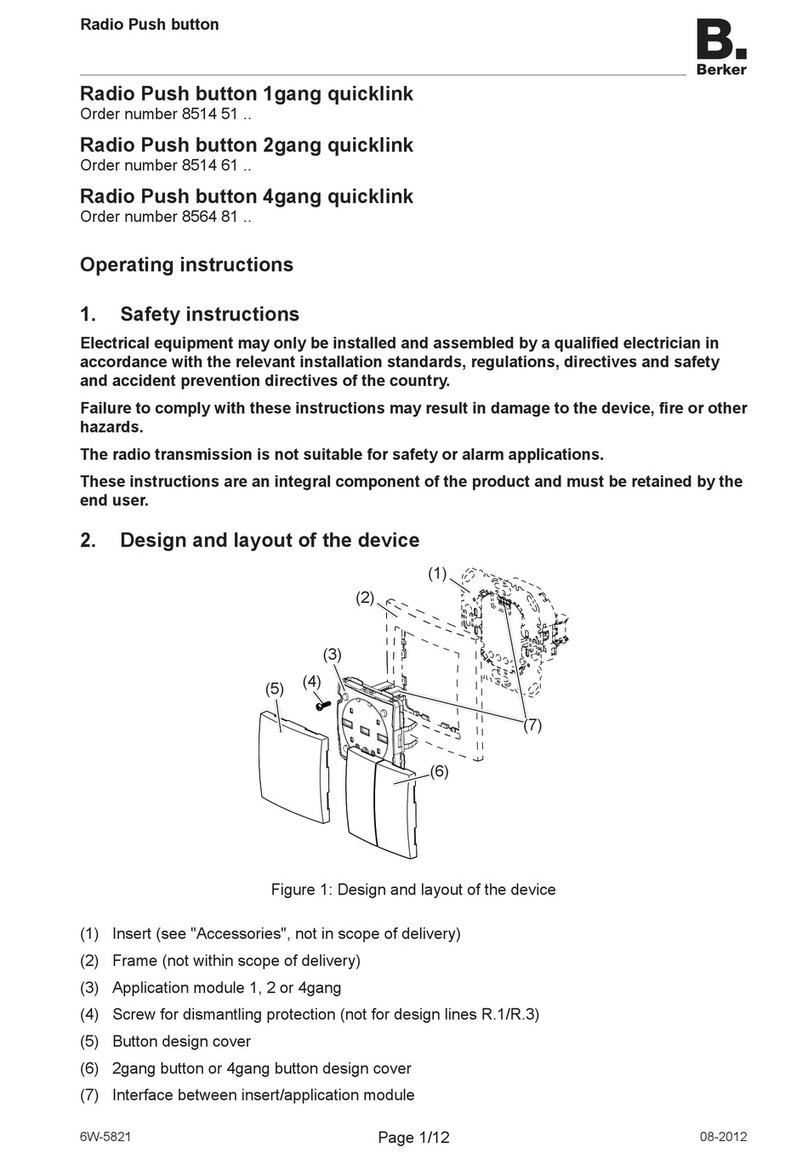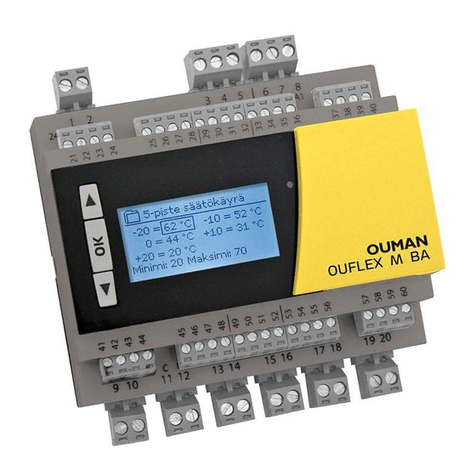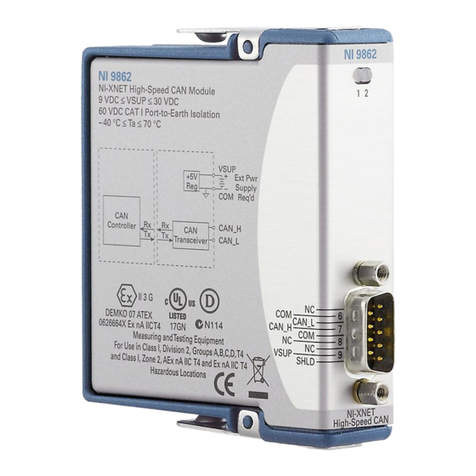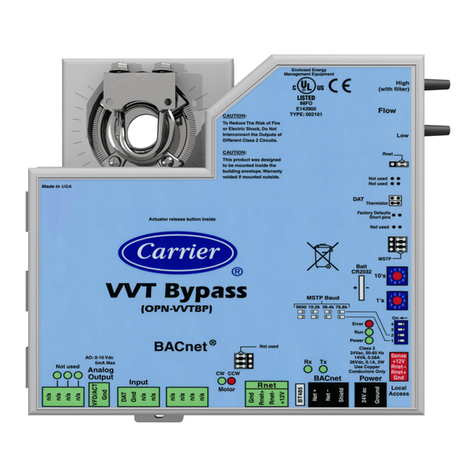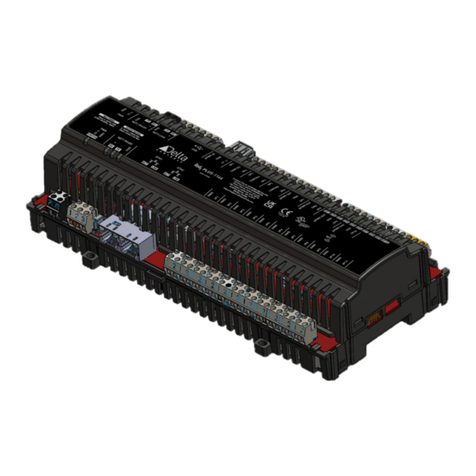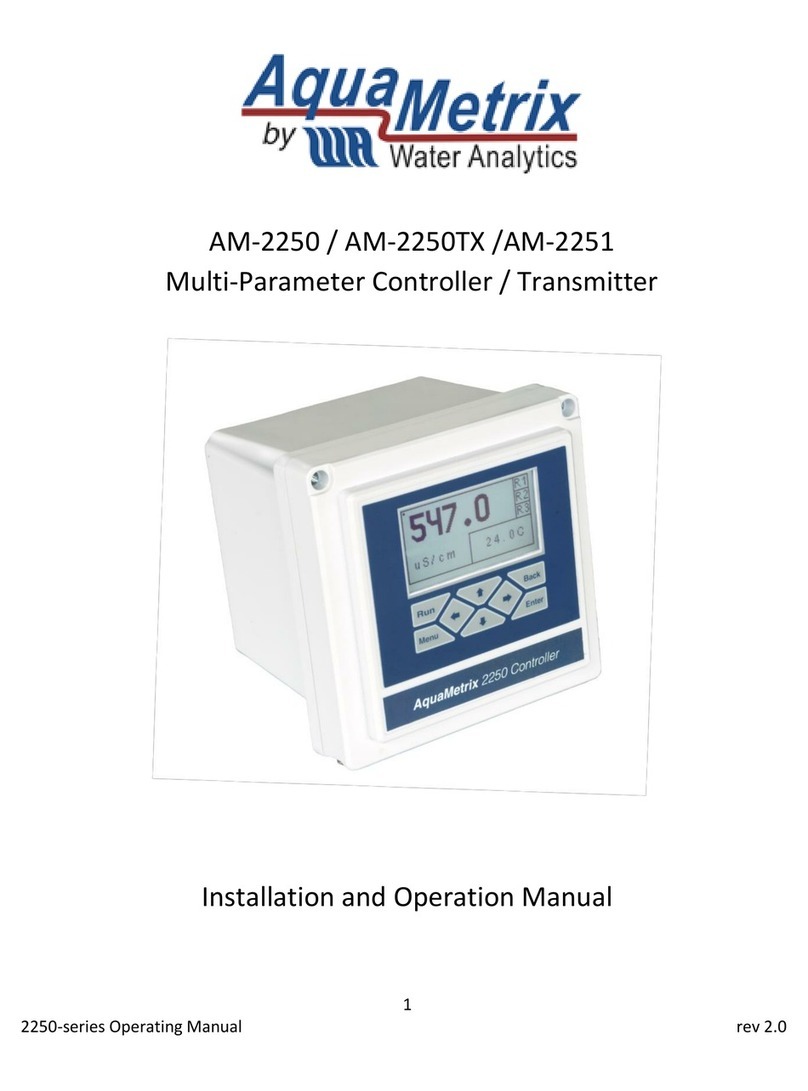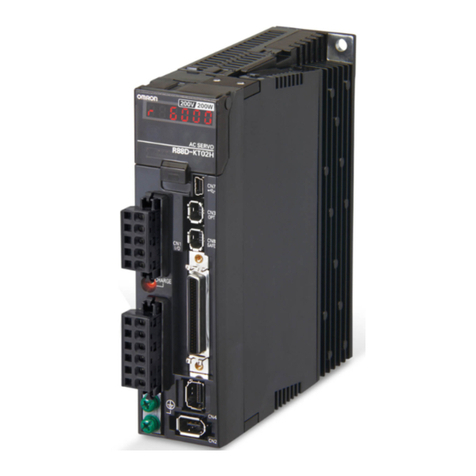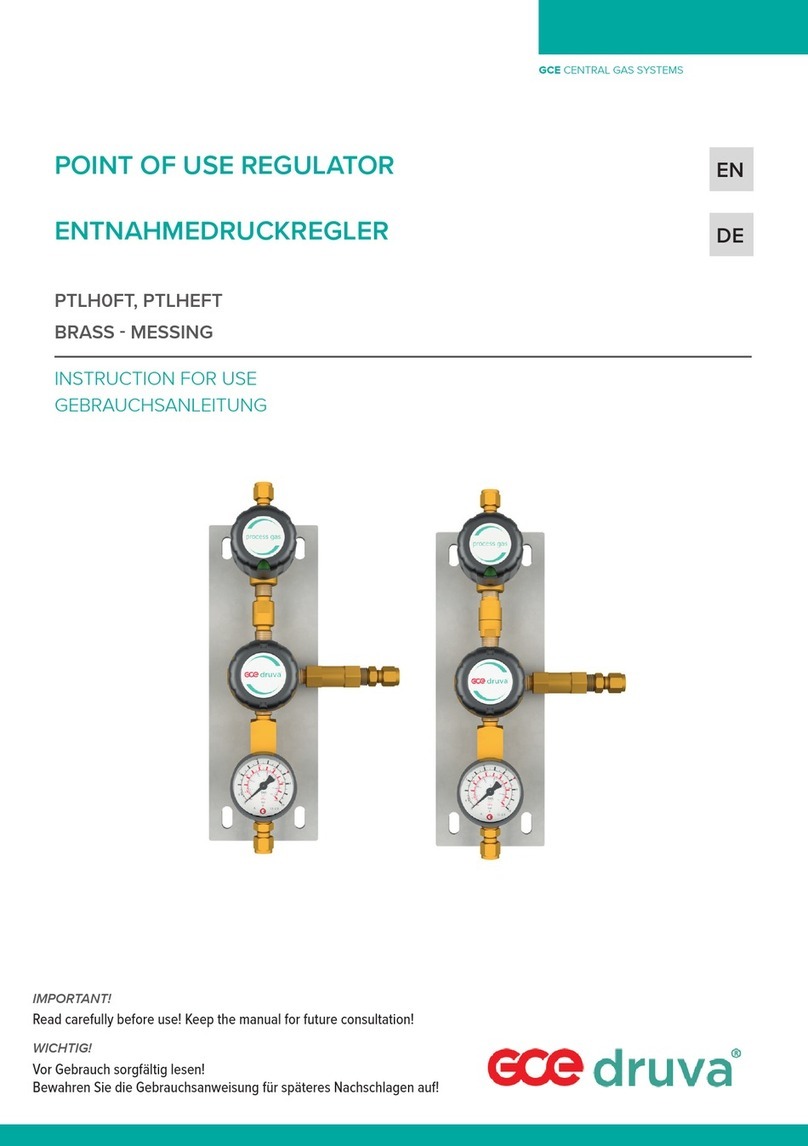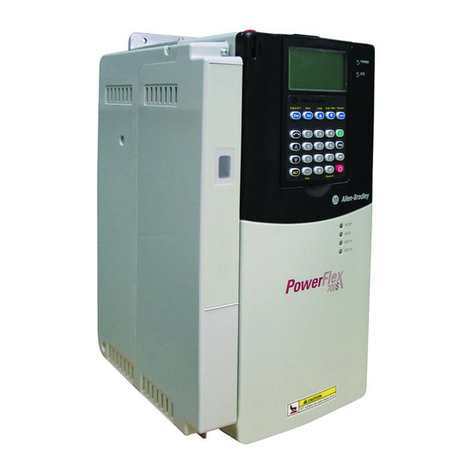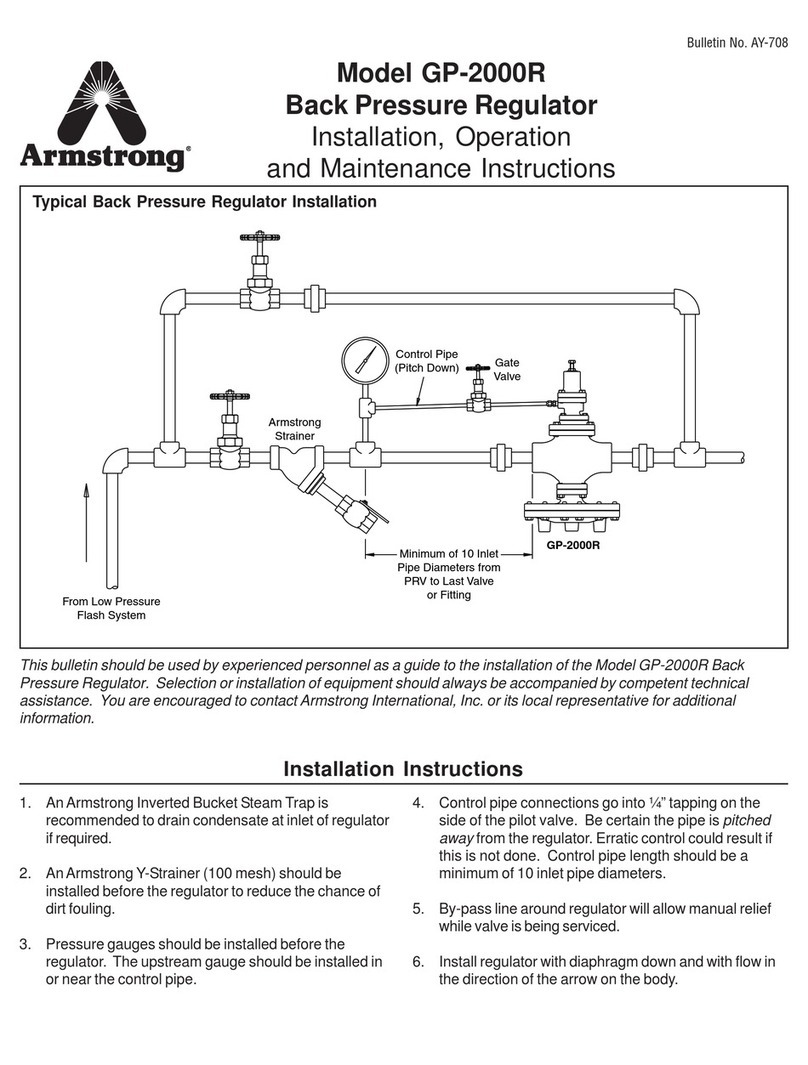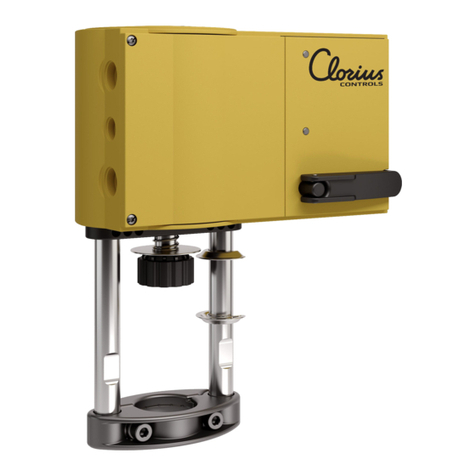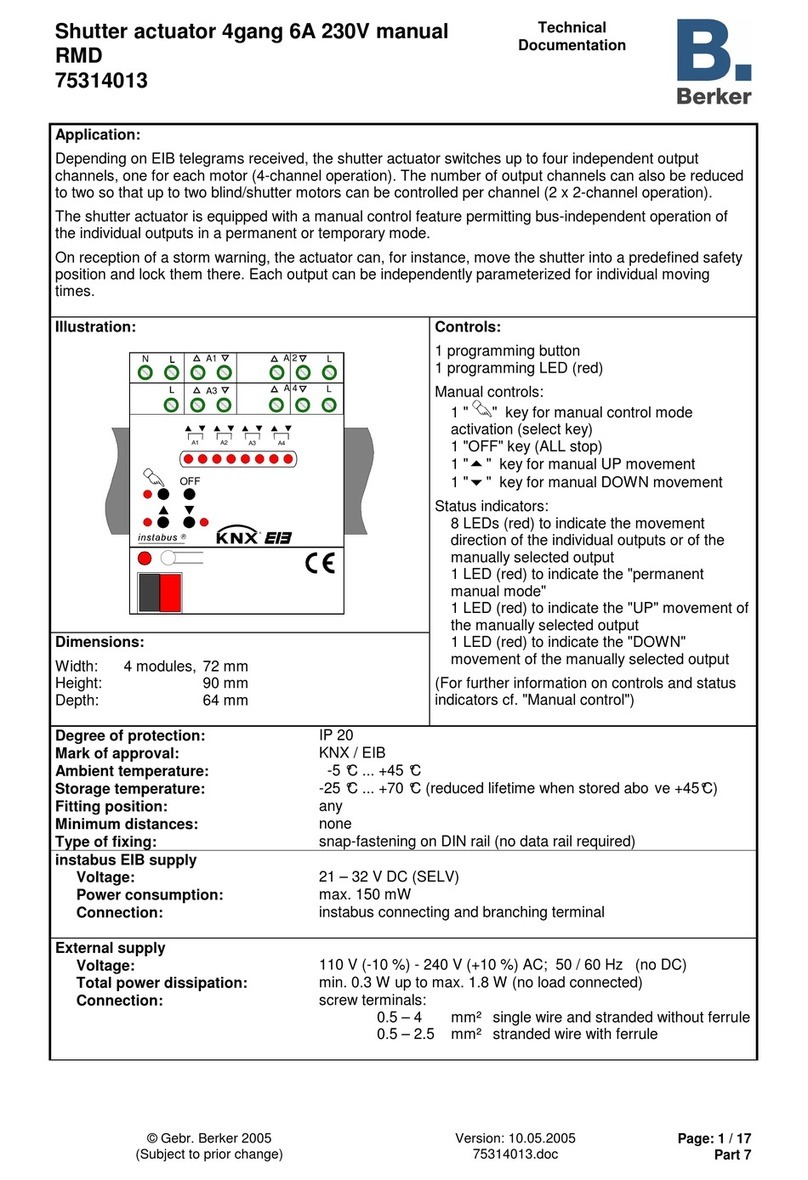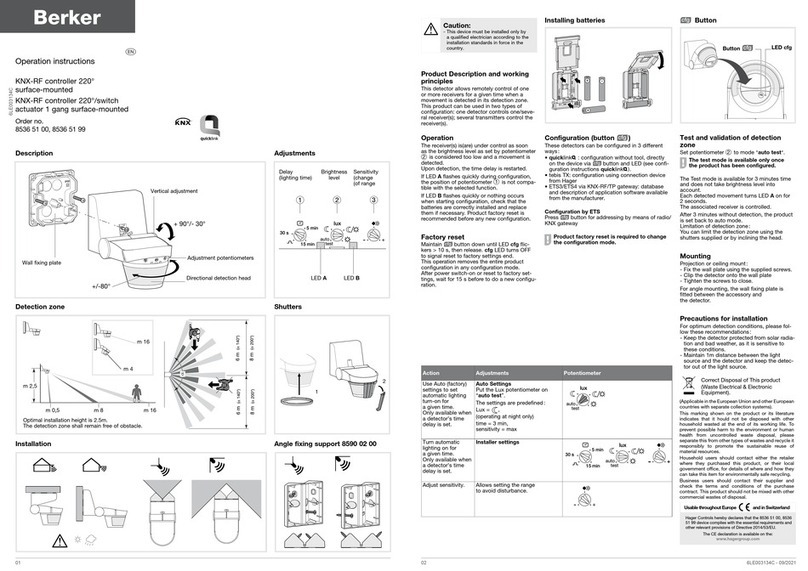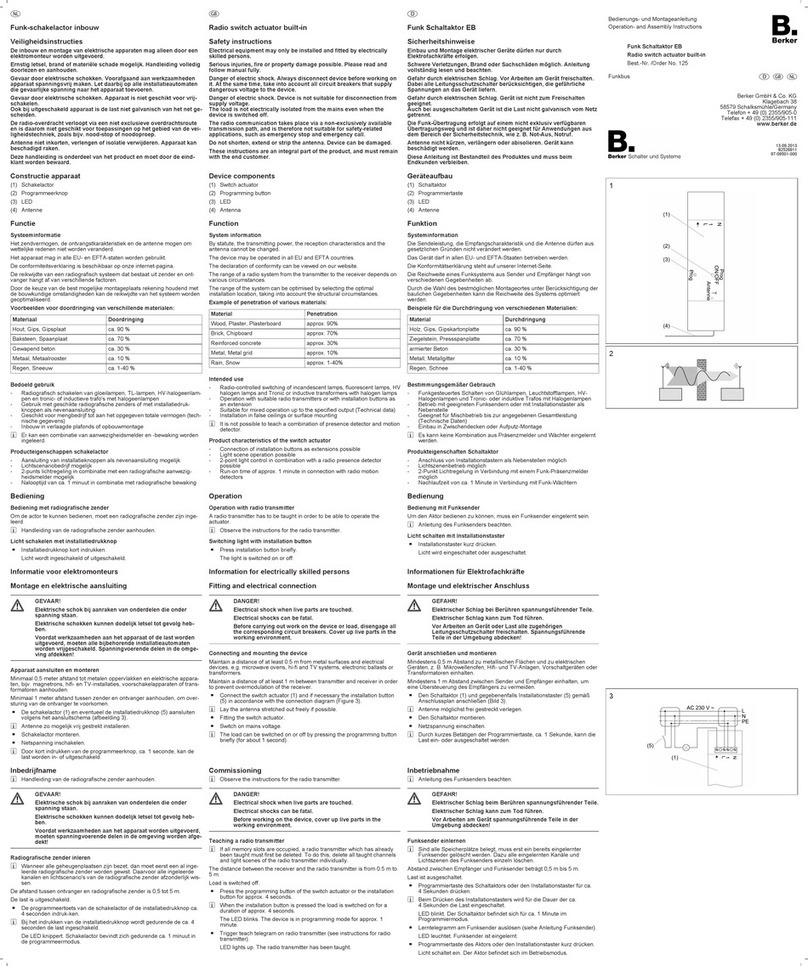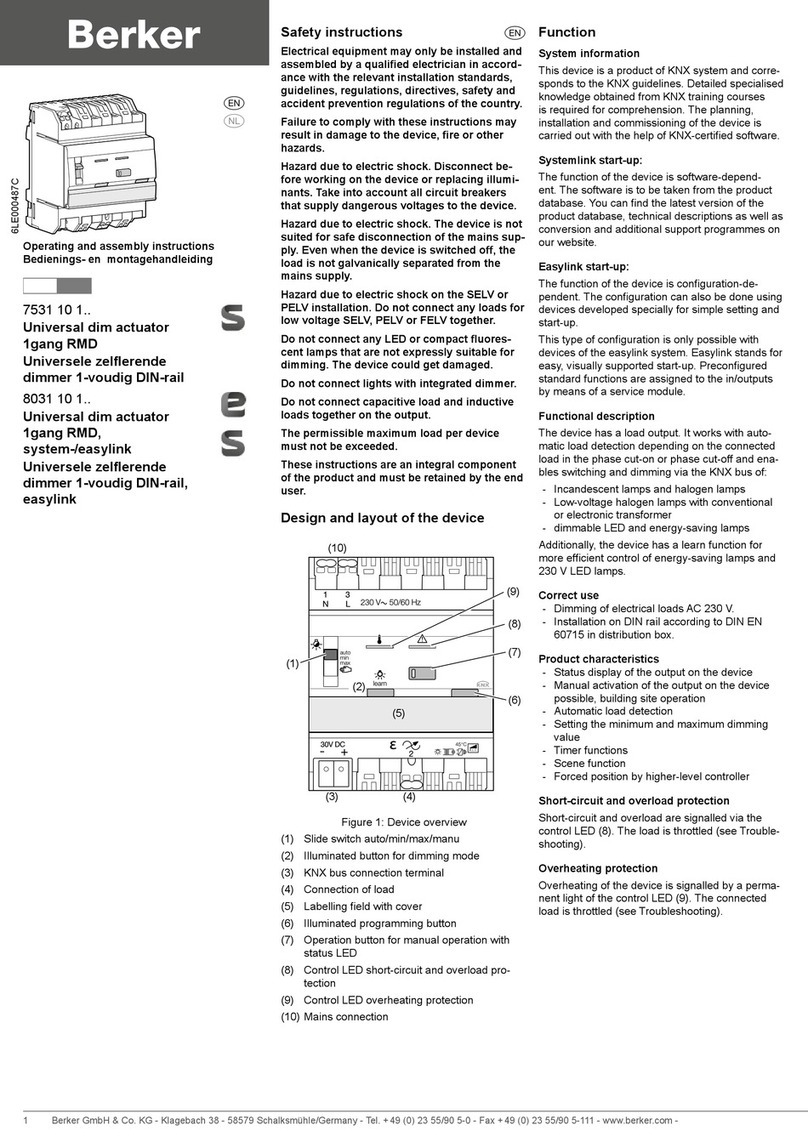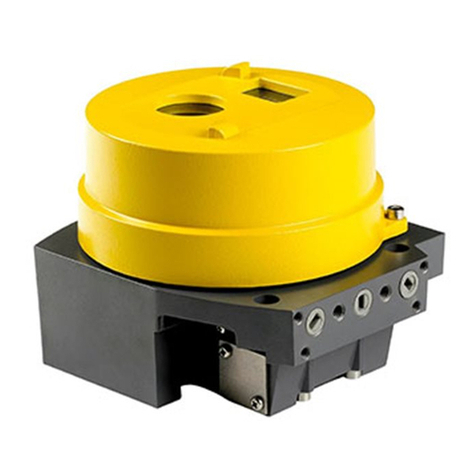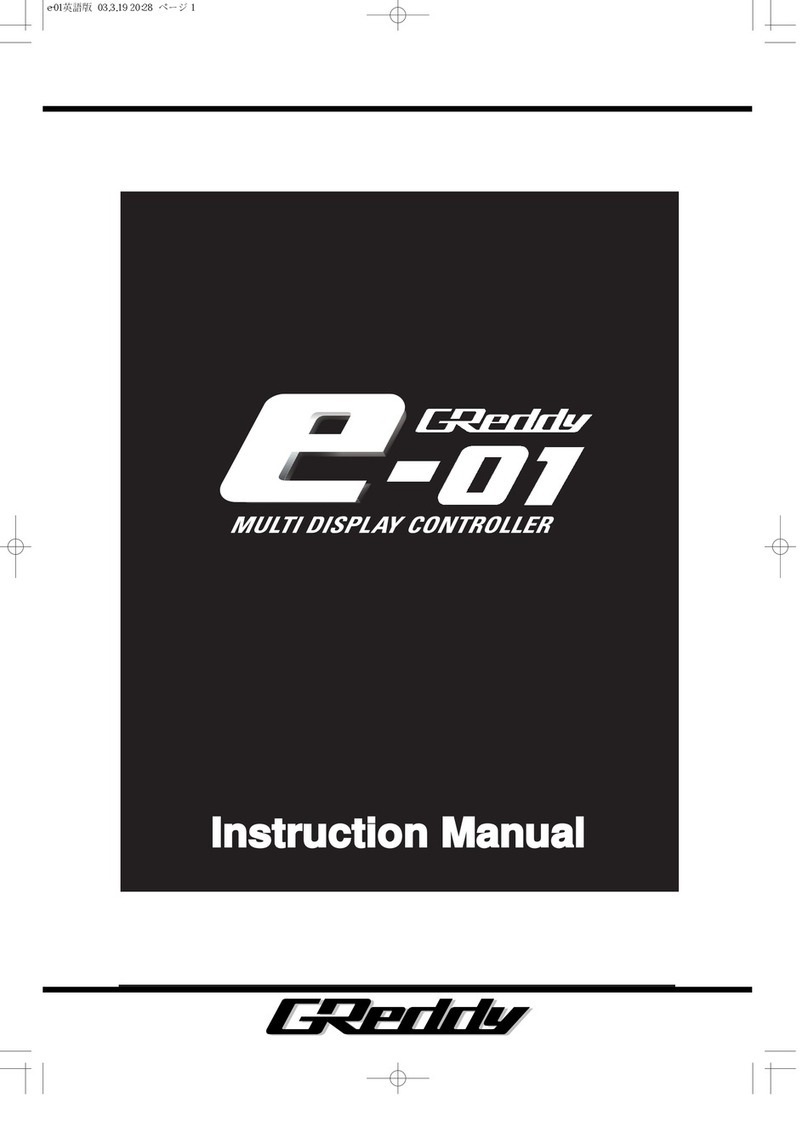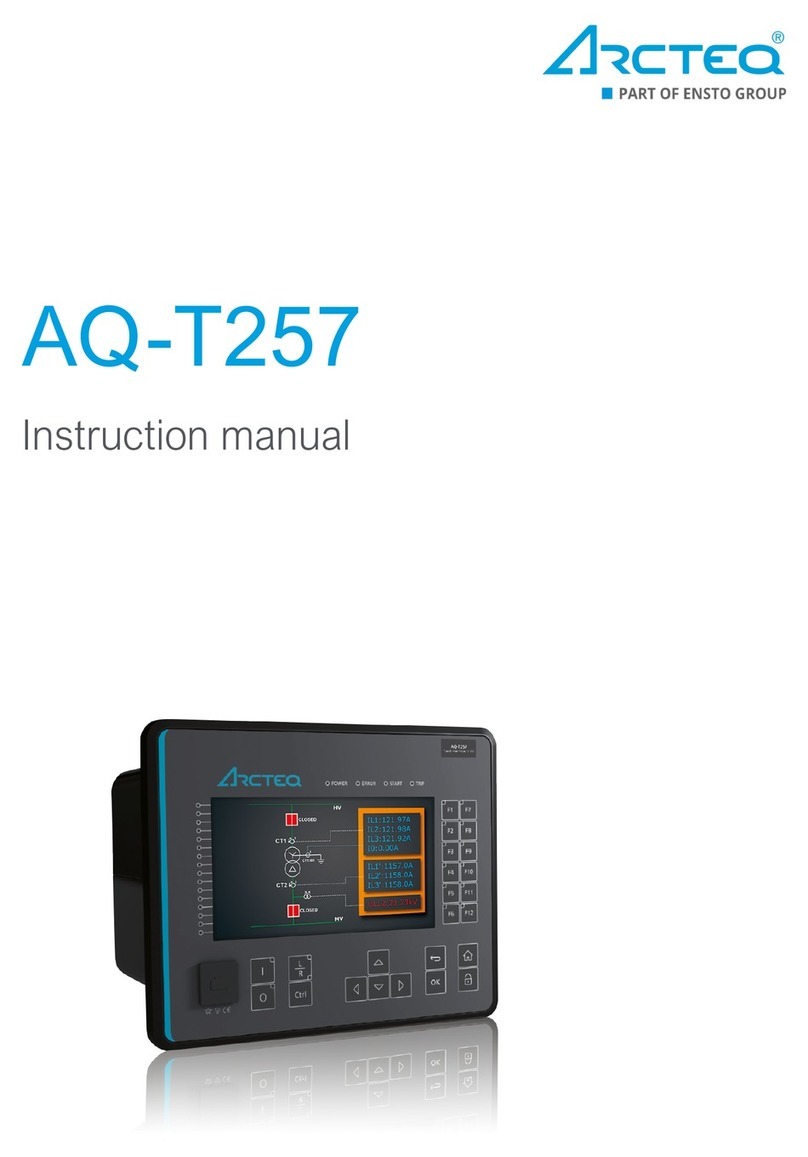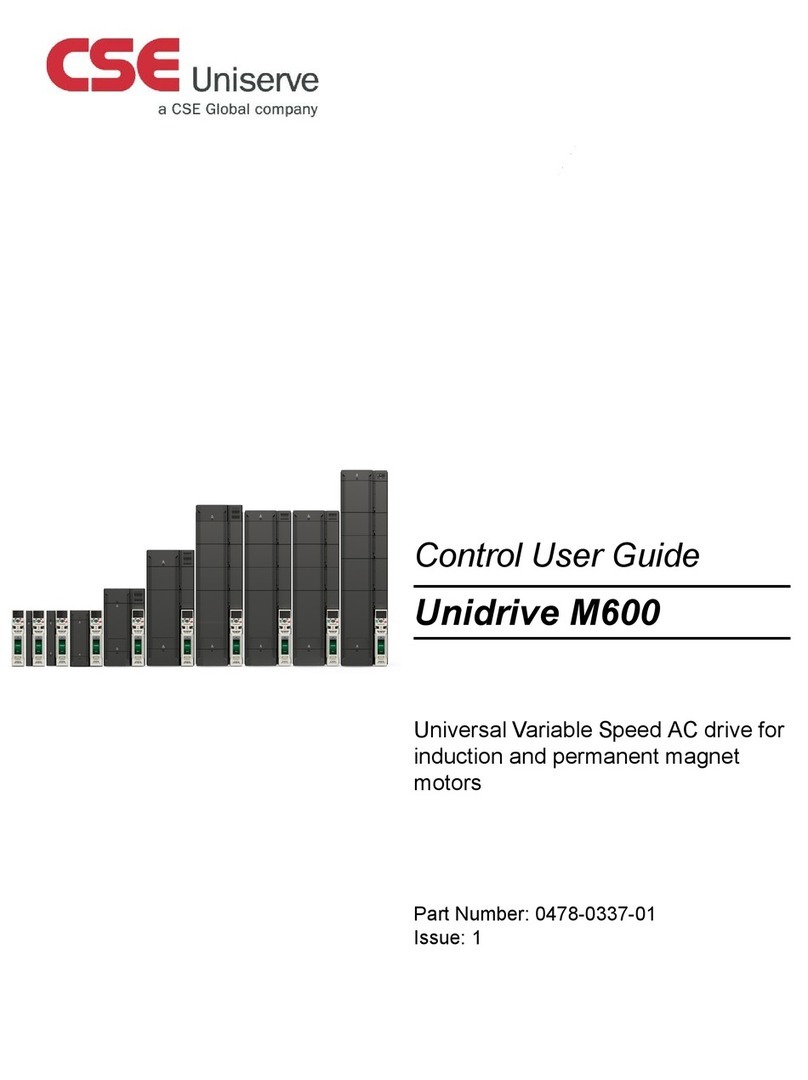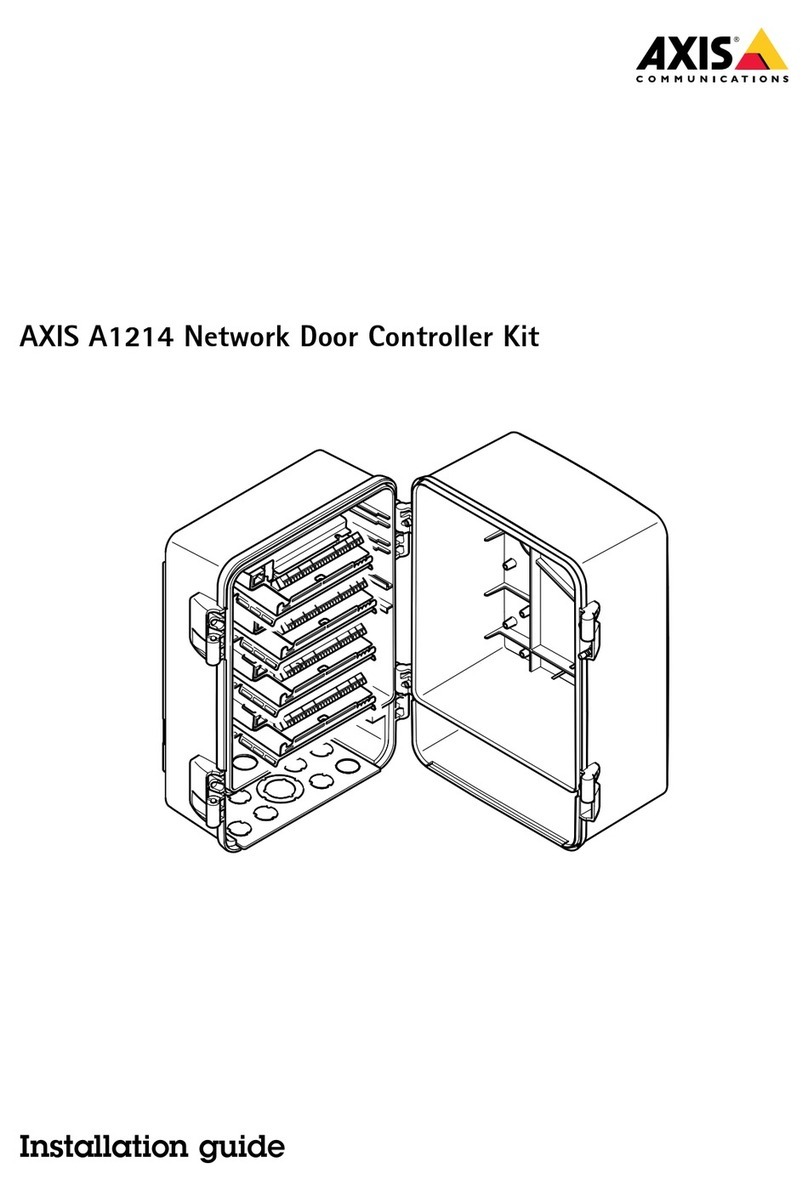
Shutter/blind actuator 1gang 6A flush-
mounted
75341002
Technical
Documentation
© Berker GmbH & Co KG 2005 Version: 17.08.2005 Part 7
(Subject to prior change) 75341002.doc Seite: 7 / 35
Functional description of the inputs
Mode of functioning of the inputs
The shutter/blind actuator is equipped with two extension inputs which - depending on parameterization - can act
directly on the shutter/blind output (local control / double-sided button principle) or alternatively as binary inputs on
the Instabus.
In the state as delivered (unprogrammed actuator), the extension inputs act directly on the shutter/blind output. This
means that the actuator can be commissioned and operated already 'on site' simply by connecting the bus voltage
and without further sensors.
•Inputs acting on shutter/blind output
The extension inputs act like an external sensor and with the predefined times for STEP and MOVE operation only
internally directly on the shutter/blind output. In accordance with the double-sided operation principle, input 1
controls the UP direction and input 2 the DOWN direction. In acc. with the 'step-move-step' operating concept, the
relay outputs react as follows:
Input Contact at input Actuation * Relay switching state
1 closed (rising edge) short STEP operation UP / Stop
long MOVE operation UP
open (falling edge) --- no reaction or stop **
2 closed (rising edge) short STEP operation DOWN / Stop
long MOVE operation DOWN
open (falling edge) --- no reaction or stop **
*: The time after which a MOVE operation is executed is fixed at approx. 520 ms. The lamella (slat)
adjustment time is approx. 2.6 s.
520 ms 2.6 s
contact reopened =
stop
STEP-
operation MOVE-
operation
contact closed
t
**: If the contact at the input is reopened before the MOVE operation has been started, only the STEP
operation is completely executed. If - after starting of the MOVE operation - the contact at the input
is being reopened during the slat adjustment time, the actuator will stop the shutter/blind output.
There is no response after opening of the contact.
For direct action, the extension inputs do not have parameters of their own so that the parameter cards for the
inputs are not available. The last selected extension signal is always the one that is executed. The time for STEP
operation of the shutter/blind output should not be less than 520 ms.
After return of bus voltage, the actuator responds to changes of the extension signal state only after the time
parameterized for the "Delay on return of bus voltage" has elapsed.
During the delay, pulse edges or signals present at the inputs are not evaluted and disregarded. The time of delay
is generally parameterized for all inputs and also for the outputs.
•Inputs acting separately on bus
The inputs of the shutter/blind actuator act independently of the shutter/blind output and separately on the Instabus
KNX/EIB. Depending on parameterization, the functions "Switching", "Dimming", "Shutter/blind" or "Value
transmitter" can be selected for each input (cf. "Parameter description"). When "No function" is selected, the
corresponding input is deactivated.
When the "Shutter/blind" setting is selected, the extension objects can be combined via group addresses with the
objects of the shutter/blind outputs. The actuator can thus be controlled via its own inputs even if the extension
signals are set for acting on the bus (e.g. group control of several actuators).
The functional description of the inputs on the following pages is valid only if the extensions are set for acting on the
bus.




















